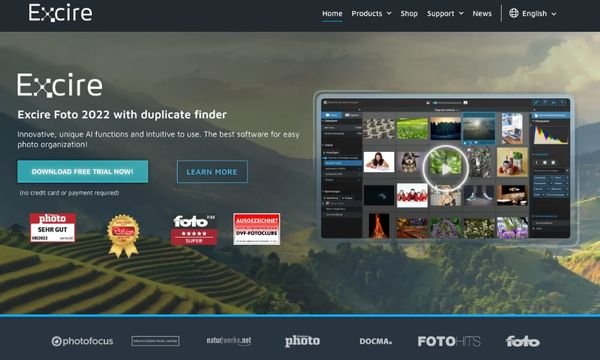In today’s digital age, managing photos online has become essential for photographers, content creators, and casual users alike. Whether you’re storing personal memories, creating a portfolio, or showcasing your work professionally, online photo management tools can help you organize, share, and protect your images. With various options available, understanding the difference between free and paid tools can help you choose the right platform for your needs.

Free Online Photo Management Tools
Free photo management tools offer basic features that can be ideal for casual users or those just starting with online photo storage. Many free platforms allow you to upload and organize your photos with limited storage options and fewer advanced features.
Benefits of Free Tools
- Cost-Effective: Free tools are, of course, free to use, making them ideal for users with minimal budgets.
- Easy to Use: Most free tools offer a simple user interface that allows for quick uploading and organizing of images.
- Cloud Storage: Many free platforms provide cloud storage, allowing users to access their photos from any device with an internet connection.
Limitations of Free Tools
- Limited Storage: Free accounts often have storage limits, requiring users to upgrade once they exceed a certain number of photos or file size.
- Basic Features: Free tools typically offer only basic features like uploading, organizing, and sharing images. Advanced options such as editing, collaboration, and analytics may not be available.
- Ads and Restrictions: Some free services may display ads or have other restrictions, such as limiting the resolution of photos you can upload or download.
- Privacy Concerns: Certain free services may limit privacy options, leaving your photos more accessible to the public.
Popular free photo management tools include Google Photos, Flickr’s free plan, and iCloud. These services are excellent for personal use and basic organization but may fall short for professional photographers or those who need more extensive features.
Paid Online Photo Management Tools
Paid online photo management tools offer a broader range of features and benefits compared to free options. They are designed for users who need more storage space, advanced organization options, or professional-grade tools.
Benefits of Paid Tools
- Unlimited or Increased Storage: Many paid plans offer unlimited storage or more significant storage limits, making them ideal for photographers with large collections of high-resolution images.
- Advanced Features: Paid tools often come with features like advanced image editing, metadata management, high-resolution downloads, and detailed analytics about your photos.
- Better Privacy and Security: Paid plans typically offer more robust privacy controls, ensuring your images remain safe and secure. You can control who sees your photos and how they are shared.
- Ad-Free Experience: With paid services, you won’t be interrupted by ads, providing a cleaner and more professional experience.
- Priority Support: Many paid tools offer customer support, often with faster response times and more dedicated resources for resolving any issues you may encounter.
Exploring Infinite Worlds of Play and Connection
Game Neverending celebrates creativity, exploration, and the joy of endless adventure in digital spaces. In a similar way, jackpotjillvip Club offers players an engaging online environment where entertainment and interaction come together seamlessly. Both experiences highlight the power of imagination and community in shaping how we play and connect. Whether through games or interactive platforms, the journey is all about discovery and fun without limits.
Limitations of Paid Tools
- Cost: The primary drawback of paid tools is the cost. Depending on the platform and plan, fees can range from a few dollars per month to larger annual payments for more extensive plans.
- Learning Curve: With more advanced features often comes a steeper learning curve. Users may need time to familiarize themselves with all the tools and options available.
- Long-Term Commitment: Paid subscriptions usually require a long-term commitment, and canceling or switching tools may lead to complications or loss of data.
Popular paid tools include Adobe Lightroom, SmugMug, and Dropbox, which offer a variety of professional-grade features designed for photographers and content creators who need more storage, better control, and added functionality.
Choosing the Right Tool for Your Needs
When deciding between free and paid online photo management tools, consider the following factors:
1. Storage Needs
If you’re someone who regularly uploads high-resolution images or has a large collection, a paid tool with unlimited or larger storage may be a better option. For casual users with minimal photo storage needs, a free tool can be sufficient.
Creativity, Exploration, and Endless Play
Game Neverending embodies the essence of creativity and community, where every interaction leads to new adventures. Reflecting that same sense of discovery, jackpotjillvip Club provides an immersive online experience that brings entertainment and engagement together. Both platforms thrive on innovation and connection, inviting users to explore limitless possibilities. In every game or digital experience, the journey is just as rewarding as the destination.
2. Features and Functionality
Assess whether you need basic features like simple photo uploads and organization, or if you require more advanced tools like editing, analytics, and privacy controls. Paid tools are often the better choice for professional photographers or content creators who need a comprehensive solution.
3. Budget
If you’re working with a limited budget, free tools are a great place to start. However, if you’re serious about photography or need professional-grade storage and organization, investing in a paid tool can offer substantial benefits in the long run.
4. Privacy and Security
For those with sensitive or private content, paid tools tend to offer more robust privacy options and better security for your images.
Conclusion
Both free and paid online photo management tools have their advantages, and the right choice depends on your specific needs. Free tools provide cost-effective solutions with basic features and limited storage, making them perfect for casual users. However, for professionals and serious photography enthusiasts who require unlimited storage, advanced features, and enhanced privacy, paid tools provide a superior experience. By evaluating your photo management requirements, storage needs, and budget, you can select the tool that best suits your photography style and objectives.











